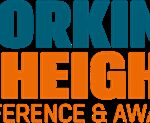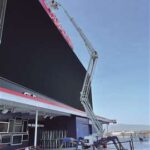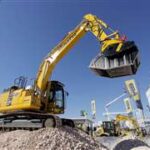How Aerial Work Platforms Revolutionize Construction and Maintenance
Aerial work platforms (AWPs) are incredibly versatile tools that make working at height a whole lot easier and safer. Whether they’re called boom lifts, cherry pickers, or elevating work platforms, they all serve the same purpose: helping people reach places that would otherwise be difficult or dangerous to access, like high up in buildings or on tall structures.
AWPs are often used for temporary, flexible access, such as when workers need to maintain electrical lines, fix high windows, or perform any other tasks that involve reaching elevated spots. Unlike elevators, which are permanent fixtures, AWPs are meant to be mobile and temporary. They can lift workers to great heights—sometimes over 100 feet—depending on the model and the job at hand.
Different Types of Aerial Work Platforms
Not all AWPs are the same. In fact, there are a variety of models, each designed for specific jobs. The main types differ based on their lifting mechanisms, but they all share the goal of providing a secure, accessible platform for workers at height.
-
Articulated Lifts (aka Cherry Pickers)
These are probably the most familiar kind of AWP, often known as cherry pickers because they were originally designed to help farmers pick fruit from trees. The jointed, boom-like design lets workers access difficult-to-reach places with ease, whether it’s fixing something on a building or trimming trees. The flexibility of the boom makes them great for working around obstacles. -
Straight Telescopic Boom Lifts
These lifts are all about going straight up or reaching out in a direct, diagonal line. The boom extends out like a telescope, providing great range and height for vertical or horizontal tasks. They’re simple to operate and are often used in construction or maintenance work. -
Scissor Lifts
Unlike other AWPs, scissor lifts mainly move vertically. They use a scissor mechanism to lift the platform, which means they’re limited in how far they can move in horizontal directions. They’re perfect for indoor work, like cleaning windows or changing light bulbs, and come in electric and diesel-powered models.
How Do They Work?
AWPs are typically powered either by hydraulic or pneumatic systems, giving them the power to lift and lower the platform smoothly. Many modern models also come with electric versions, which are becoming more popular for indoor use or in areas where quieter, more environmentally friendly machines are preferred. The choice of power source usually depends on the job—electric for clean, quiet work indoors, and diesel or hydraulic for heavy-duty outdoor tasks.
For example, electric scissor lifts are commonly used indoors because they produce no emissions and are perfect for smooth, flat surfaces. On the other hand, diesel-powered lifts are equipped with larger tires, making them ideal for rough terrain and outdoor construction jobs.
AWP Uses Across Different Industries
AWPs aren’t just used for basic maintenance tasks. They play a critical role in several industries, from construction and telecommunications to arboriculture and firefighting.
- Construction and Maintenance: These platforms are invaluable for workers who need to install or repair equipment high off the ground, such as streetlights, communication towers, and overhead electrical lines.
- Firefighting: Fire departments worldwide use fire trucks equipped with aerial platforms to access hard-to-reach fires in high-rise buildings. These units often come with water hoses and other firefighting tools.
- Tree Maintenance: Arborists use AWPs to safely access trees, trim branches, or even cut down trees, all while keeping themselves safe on a stable platform.
Safety Features: Keeping Workers Safe
Working at height can be risky, but AWPs come with several safety features to keep operators protected. Most platforms are equipped with guardrails to prevent falls, and many have safety harnesses or restraints to secure workers while they’re on the platform. Some models even include emergency stop buttons or manual lowering systems in case of power failure or malfunction.
One of the biggest safety concerns is working near power lines. If an AWP comes into contact with electrical wires, it could lead to electrocution. To prevent this, manufacturers use non-conductive materials for the platforms and designate safety zones around electrical hazards.
Additionally, most AWPs come with sensors that help prevent accidents. For example, some machines have overload sensors that stop the platform from rising if the weight limit is exceeded. Others have tilt sensors that make sure the platform is stable before allowing it to extend.
Conclusion
Aerial work platforms have revolutionized the way we approach tasks that require reaching high places. From providing flexible access in construction and maintenance to helping firefighters save lives, AWPs offer a safer, more efficient way to work at height. With a variety of types and safety features, these platforms ensure that workers can get the job done with minimal risk, whether they’re in a cherry orchard or on a construction site.




